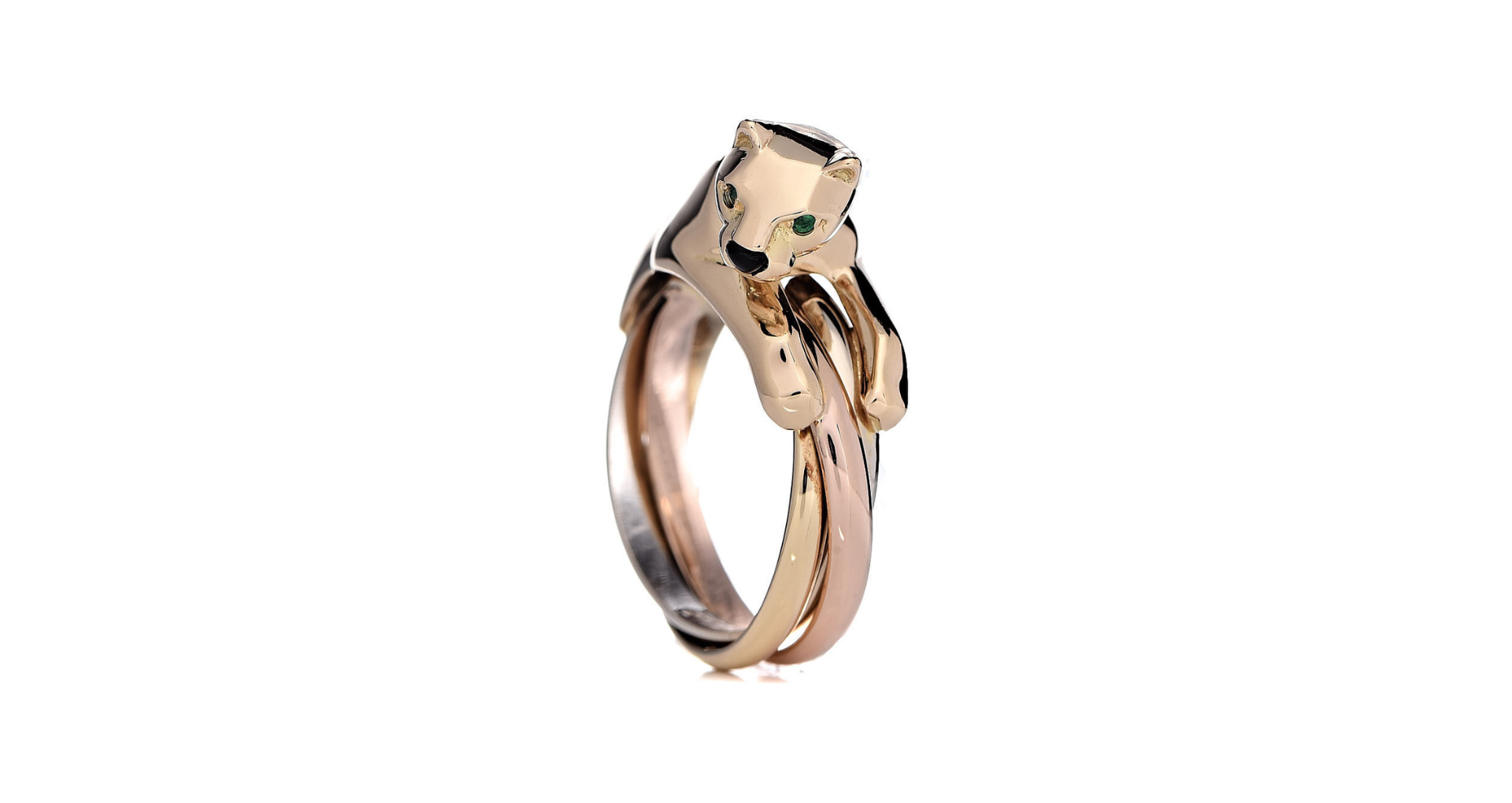
Images: Cartier and British Vogue
Balanced proportions and clean lines—that’s the hallmark of a Cartier piece. Ever since the Cartier Trinity ring was released, it has danced on the fine line between jewellery and sculpture. Described in France as bagues trois ors (three gold rings), this design first saw the light of day in 1924, 80 years after the company was established.
It all started with Jean Cocteau, French poet and filmmaker, who was fascinated by the rings of Saturn. Transfixed by their beauty, he approached his friend Louis Cartier with a unique request—to transform these celestial rings into a piece of jewellery for his little finger. Cartier, inspired by the challenge, created what we now know as the Trinity ring. When Cocteau stepped out in public, wearing a pair of these ‘Trinity’ rings stacked together, Paris reportedly went into a frenzy.
The Trinity ring solidified its status in the 1930s, largely due to the influence of the French playwriter. As a central figure in the Parisian art scene, he gave the ring profound meaning. To the circles he frequented, Trinity became a symbol of artistic freedom, individuality and the pursuit of pure beauty. He became one of the ring’s most passionate advocate. Often seen wearing two rings stacked together on his pinky finger, Cocteau turned the piece of jewellery into his signature piece. With the Duke of Windsor following suit, the rings swifty attained cult status.

After the war, with an increase in people’s purchasing power and better living conditions, the 1950s and 1960s brought about a new age of glamour. During this shift, the Cartier Trinity ring once again took centre stage. It became the must-have accessory for Hollywood celebrities and the international jet set. The magnetism reached new heights when it started being spotted on the hands of some of the most celebrated personalities of the time. Grace Kelly and actress Romy Schneider incorporated the Trinity ring into their outfits, proving just how versatile the design could be. Meanwhile, French actor Alain Delon made the ring a personal trademark with his tailored suits and sleek turtlenecks.
As time went on, Cartier kept the Trinity collection fresh and exciting, introducing new designs that went with the evolving spirit. In 1967, the Maison pushed the envelope with a seven-band version of the classic bracelet.
In 1973, Cartier released a game-changing collection called Les Must de Cartier, bringing the beloved design into everyday life. This move was driven by the idea of “you must have”, which gave birth to the Les Must line, making the designs more accessible than ever before. The team integrated the Trinity three-ring motif into a variety of lifestyle products, like lighters, pens and decorative objects. This collection democratised Cartier’s designs, allowing a wider audience to enjoy the finesse of the Trinity.
The marriage of three different golds in the ring symbolises the merging of different elements into a unified whole, which has come to represent various ideas, such as linking the past, present and future. Its circular design reflects the cyclical nature of life’s milestones, serving as a witness of personal achievements and moments. The design was seen as a plaything for grown ups, if you happen to drop it, you can simply piece the rings back together, much like putting together a jigsaw puzzle.
As the 20th century ended, Cartier solidified its place in the world of classic designs by officially naming the three-band, three-gold ring collection “Trinity”, reflecting its evolution. Officially, the three bands of gold in the Trinity ring signify fidelity, friendship and love. However, this design invites interpretations. The name itself, alluding to the Holy Trinity, carries a spiritual meaning. Over the years, the ring has been given as a cherished gift from parents to children upon their coming to age, from husbands to wives to mark the arrival of a new child and as a token of commitment for couples not yet ready to get engaged.
Despite its ageless appeal, the Trinity design never remains static. Often spotted on the hands of Princess of Wales and Kylie Jenner, the Maison continuously introduces new iterations, including version with diamonds, white gold and black ceramic. The latest additions to the collection now feature onyx ‘Panthère’ accents—a motif inspired by Cartier’s iconic panther theme—and a new extra-large bracelet and a modular-style ring with pavé-set diamonds.

Image: Fashionphile
To mark the milestone of Trinity ring’s 100th anniversary this year, Cartier had assembled a group of A-listers—from Yara Shahidi to Labrinth and Paul Mescal—for the collection campaign in April. In celebration of completing a century, Cartier introduced fresh takes on the design, inspired by its fundamental origins. The new collection offers cushion-shaped rings, bracelets and pendants, reflecting a metamorphosis inspired by two of Louis Cartier’s most memorable creations—the squared Tank and the Santos. Today, you can explore and purchase the Trinity ring collection from Cartier India, as this miniature icon keeps rolling along.
Discover more stories on luxury, business, culture, and innovation here at Candle Magazine
